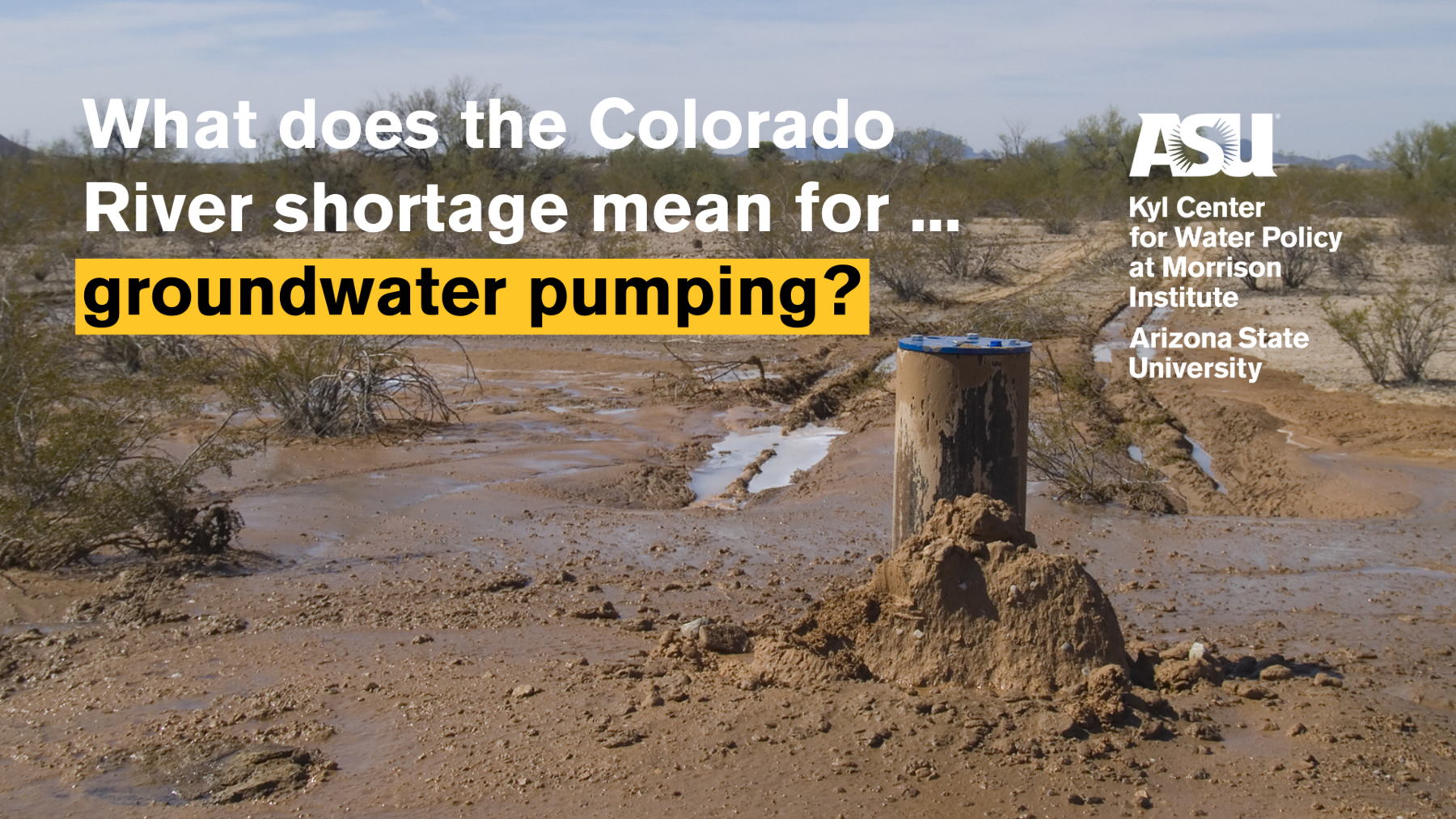
What does the Colorado River shortage mean for ... groundwater pumping?
Leading up to the expected Colorado River shortage declaration in August, the Kyl Center for Water Policy at Morrison Institute will be posting information about what the shortage will mean for Arizona communities. This is part three. The rest of the series is available here.
From the Kyl Center report The Myth of Safe-Yield: "The iconic images of the bathtub ring around Lake Mead caused by falling water levels have been viewed by millions around the country and the world. Lake Mead has become the symbol of what happens when climate change meets over-allocation of a fragile water supply. Seeing is believing, and there is now a near-universal belief that changes are needed to help sustain the Colorado River.
"If we could see the groundwater aquifers that serve as our underground reservoirs, many of them would be showing similar signs of stress as groundwater levels fall, the aquifers collapse, land subsides, and minerals and pollutants concentrate in the diminished supply that is left. If we could see that with our own eyes, perhaps we would understand, as we do with Lake Mead, the need to manage better the use of these finite water supplies."
How will the Colorado River shortage impact groundwater pumping in Arizona?
- Arizona has stored a large amount of Colorado River water in aquifers in Central Arizona in preparation for shortage.
- However, groundwater pumping will increase as farmers in Central Arizona get less Colorado River water delivered through the Central Arizona Project (CAP).
- Increased groundwater pumping reduces the availability of this finite water supply for future needs, including municipal and industrial uses.
- While groundwater use in the three Central Arizona counties that receive CAP water has decreased since 1980, groundwater is still being pumped at unsustainable levels.
- Overpumping of groundwater supplies has well-documented environmental and health-related consequences, including land subsidence, water quality degradation and increased costs.
Check out the links below for more information:
The Myth of Safe-Yield: Pursuing the Goal of Safe-Yield Isn't Saving Our Groundwater
Explore Groundwater Level Changes in Arizona Sub-Basins